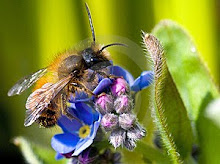Cooking for kids: hints and tips
by: queenie the bee, for helium.com
With two little boys of my own, I know how important quick and easy meals are to a person's daily life. Nutrition is one of the most important factors in the meals that I prepare for my two sons. It is a common, but misconstrued assumption that nutritious meals are not kid-friendly, or even worse- that they are unpalatable. Neither of these misconceptions takes into account that preparing meals with whole foods such as real cheese, real milk, and real veggies can taste scrumptious, but are also great for growing kids' bodies.
Nutrition for children is extremely important because their minds and bodies are growing at an exceptional rate every day. Adults are habitual worriers when it comes to their weight, but we need to remember that things like fat can actually be beneficial to our bodies, in the correct amounts. The trick comes with what type of fat your little ones are consuming. We all know to steer clear of trans fats, of course, but do you know which cooking oil to choose if one is not listed specifically in a recipe? Most would guess extra virgin olive oil, which is definitely better than some other oils! The answer is actually canola. Canola oil contains healthy fatty acids that actually raise good cholesterol . Of course, as parents, we try to do everything we can to give our children the best possible care for later on in their adult lives.
Chasing little ones around does not leave much time for preparation work, so I have assembled here two lunchtime menus that can be used for any age child. Cooking and preparing lunchtime meals for a baby as well as a toddler can quickly start feeling like you are the chef/waitress/cashier/bus boy at a short-order cafe. Filling little tummies with a simple, yet nutritious lunch can help the rest of your day's "adventure" go much smoother. All of these ingredients can be found at your local grocery store. For the most part, I have tried to use whole foods in addition to healthy snacks that are readily available. I have listed ingredients in portion sizes for a 6-12 month old baby, as well as for an average toddler (1-3 years old). These are actual portion sizes that I use with my boys.
LUNCHTIME MENU 1
Rich in: Vitamin A, Vitamin C, Folic Acid, Protein, Fiber, Potassium, Iron
Rich in: Vitamin A, Vitamin C, Folic Acid, Protein, Fiber, Potassium, Iron
BABY: Take 1 slice multi-grain bread. Spread about a tablespoon of natural or organic peanut butter on one side. Add pureed banana spread to the peanut butter. Fold in half and cut into tiny squares. Serve with pureed carrots or squash. Finish the meal with leftover pureed banana. Be sure to supervise baby eating his peanut butter sandwich squares!
TODDLER: Take 1 slice multi-grain bread. Spread about a tablespoon of natural or organic peanut butter on one side. Drizzle natural, no sugar added, honey on the peanut butter. Fold in half. Serve with chopped organic baby carrots (or for older toddlers, whole baby carrots) and a banana (sliced for younger toddlers)
LUNCHTIME MENU 2
Rich in: Vitamin A, Vitamin C, Vitamin E, Vitamin K, Protein, Fiber, Omega 3, Omega 6
Rich in: Vitamin A, Vitamin C, Vitamin E, Vitamin K, Protein, Fiber, Omega 3, Omega 6
BABY: Slice 1 ripe avocado in half, and cut one part into tiny squares. Store the other half of the avocado with the pit inside a zip lock bag for tomorrow. Be sure to keep the pit inside, because it helps the avocado stay fresher. Cut the remaining half into tiny squares and serve to baby (with a bib, of course!) Meanwhile, cut some natural cheddar cheese into tiny squares that baby will be able to grasp, roughly 1/3 inch square. Serve with a mix of mashed sweet potatoes and plain organic yogurt. To save time, prepare more than one serving of sweet potatoes at a time. Steaming or baking both work well. Mash the remaining sweet potatoes, and freeze in small plastic containers to thaw for later use.
TODDLER: Slice 1 ripe avocado in half, and set one part aside. Follow above directions for storing the other half of the avocado. With the remaining half, puree the avocado into a healthy guacamole. If desired, add a small amount of plain organic yogurt instead of sour cream to make the guacamole more creamy. This adds calcium and wonderful probiotics that aid in your toddler's digestion. Pull out a few more baby carrots, and let the toddler dip away with his very own guacamole. You could even come up with a fun name for guacamole, if that just sounds too gourmet for your little foodie. "Green Goo" might go over well for a 4 year old boy! (again, my only solid food experience is with boys, so maybe a little girl wouldn't appreciate that) Serve with melted natural or organic cheddar cheese over whole wheat Ritz or saltine crackers. (yes, they do exist!)
These are just a couple of ideas that you may have already tried, but weren't aware of the rich nutrients you were feeding your growing child. There are many resources available that make it easy to find the exact nutrients in all of our common foods. Teach your little one healthy eating habits early, and they'll grow to prefer it later on in life.




2 comments:
Good ideas!
Even if Maya is 3 and a half years old, I think I am going to use some of the ideas from your post.
I agree! :) It would be great for a 3 1/2 year old! :) :) I usually do the exact same thing for my 4 year old as I do for my 2 year old....perhaps not cut into such teeny pieces, but other than that- same food. Helps me keep tabs on their nutrition pretty well.
Post a Comment